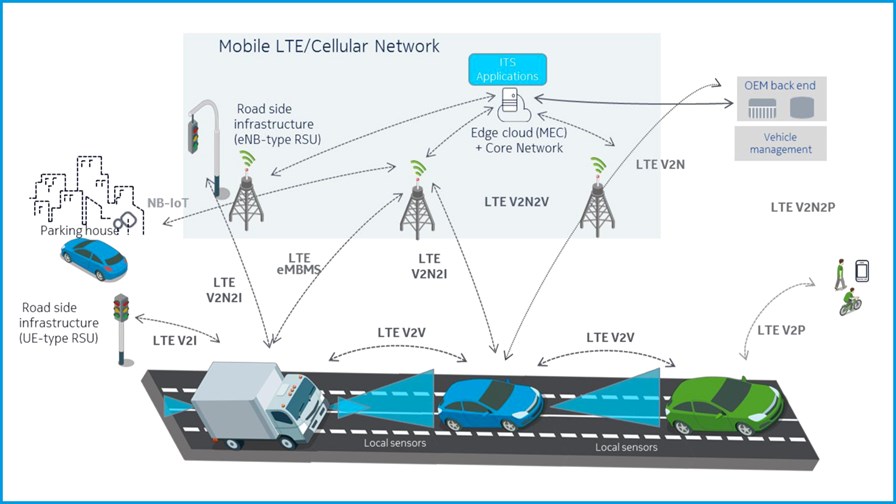
© NGMN
- The telco alliance backs C-V2X technology for connected cars
- Publishes results of a two-year research project
- Contributing members already provide cellular connectivity to 30m vehicles
- Describes the competing 802.11p as a “dead-end” technology
The telco-led Next Generation Mobile Networks (NGMN) Alliance has just published its cellular V2X (vehicle to everything) report containing the findings of two years of work by its members. Unsurprisingly, the cellular-focused group concludes that C-V2X technology is superior to the IEEE’s wifi-based 802.11p standards, from a technical, economical and ecosystem perspective and can easily satisfy basic yet critical safety applications.
The NGMN report also concludes that the technical advantages of C-V2X include communication range, latency and scalability, and that it has a natural evolution path to future advanced applications by updating current networks to 5G. Its vehicle-centric safety features also supports use cases for other traffic users, such as pedestrians and cyclists. Tests are already ongoing, and the group believes the technology can be deployed by 2020.
“This White Paper can provide the framework for a smooth transition into the world of the truly connected car – especially as we start to see the introduction of 5G – and I strongly encourage all stakeholders involved in the ecosystem to read the document and shape their future planning around it,” said Huang Yuhong, Deputy General Manager, China Mobile Research Institute.
The V2X task force was established in June 2016 to study and evaluate V2X technologies and requirements, while looking to harmonise telcos’ views on LTE-based V2X and the competing US-focused dedicated short-range communications (DSRC) IEEE-802.11p standard. Its work also covered various deployment aspects of the connected car, including multi-operators and roaming, business models of operating an Intelligent Transport System (ITS), examining available spectrum and regulatory aspects and reviewing security and privacy issues.
Mme Huang was keen to stress that the NGMN will continue to support the “go-to-market statements” from car manufacturers and chip-set suppliers, as well as continuing to collaborate with other industry associations including 3GPP, ETSI and 5GAA. Last month, the NGMN launched four new key projects to support the development and deployment of 5G networks:
- Spectrum and deployment efficiencies
- URLLC requirements for vertical industries
- RAN convergence
- Extreme long-range communications for deep rural coverage
The new report notes that with the finalization of 3GPP Rel. 14 specifications at the beginning of 2017, telcos now have a 3GPP standardized solution, which supports both long range as well short range communication, and which fulfils all the requirements of a cellular ITS ecosystem. The 88-page C-V2X report, which boldly refers to 802.11p as “a dead-end technology”, is available for download here.
Email Newsletters
Sign up to receive TelecomTV's top news and videos, plus exclusive subscriber-only content direct to your inbox.




